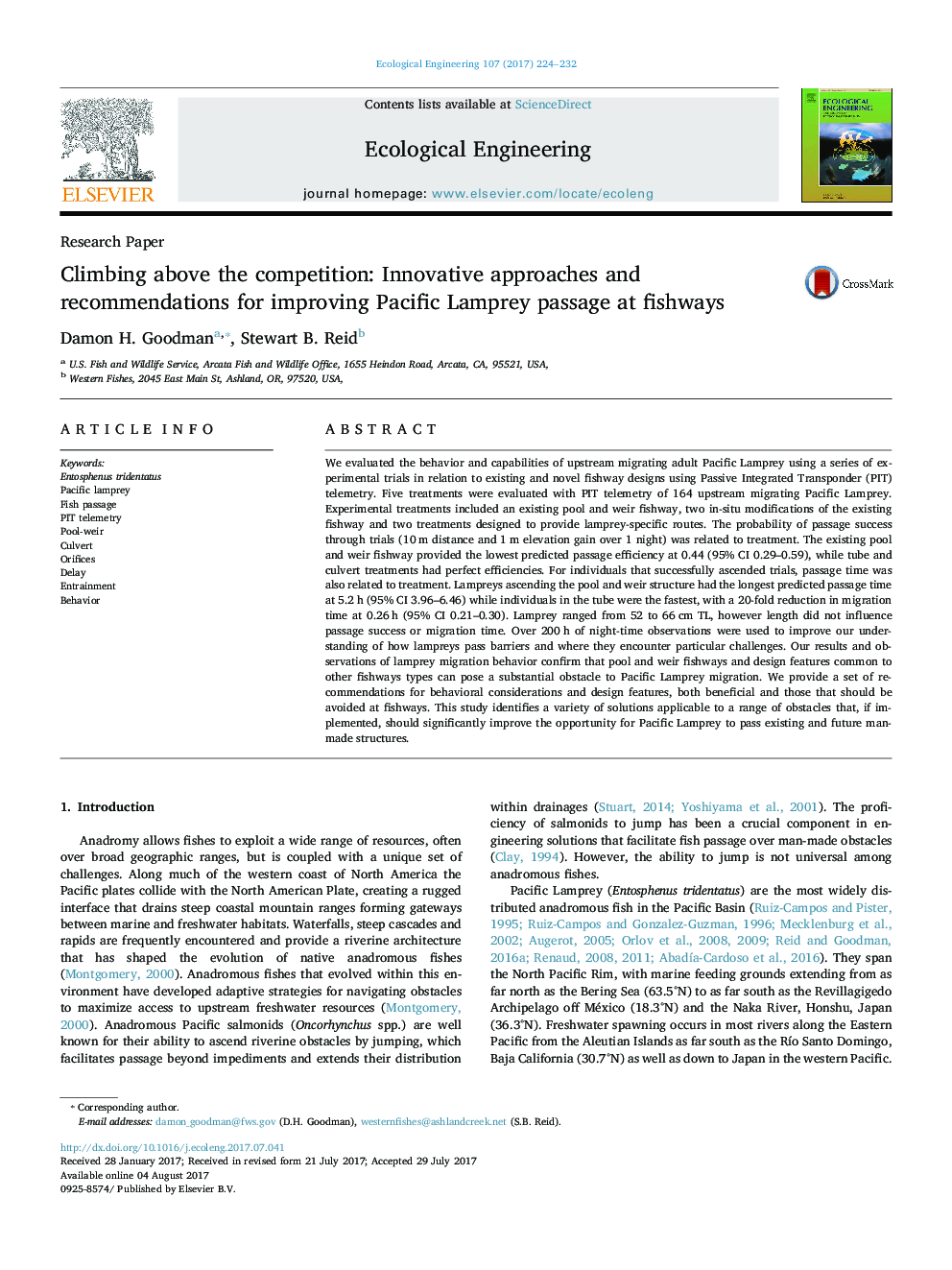| Article ID | Journal | Published Year | Pages | File Type |
|---|---|---|---|---|
| 5743678 | Ecological Engineering | 2017 | 9 Pages |
â¢Fishways designed for other species can represent a barrier to lampreys.â¢Simple modifications can reduce passage time by 20 fold past typical pool-weir fishways.â¢Behavior, climbing abilities and subaerial routes influence passage performance.â¢Successful multispecies fishways may require a lamprey-specific route.
We evaluated the behavior and capabilities of upstream migrating adult Pacific Lamprey using a series of experimental trials in relation to existing and novel fishway designs using Passive Integrated Transponder (PIT) telemetry. Five treatments were evaluated with PIT telemetry of 164 upstream migrating Pacific Lamprey. Experimental treatments included an existing pool and weir fishway, two in-situ modifications of the existing fishway and two treatments designed to provide lamprey-specific routes. The probability of passage success through trials (10Â m distance and 1Â m elevation gain over 1 night) was related to treatment. The existing pool and weir fishway provided the lowest predicted passage efficiency at 0.44 (95% CI 0.29-0.59), while tube and culvert treatments had perfect efficiencies. For individuals that successfully ascended trials, passage time was also related to treatment. Lampreys ascending the pool and weir structure had the longest predicted passage time at 5.2Â h (95% CI 3.96-6.46) while individuals in the tube were the fastest, with a 20-fold reduction in migration time at 0.26Â h (95% CI 0.21-0.30). Lamprey ranged from 52 to 66Â cm TL, however length did not influence passage success or migration time. Over 200Â h of night-time observations were used to improve our understanding of how lampreys pass barriers and where they encounter particular challenges. Our results and observations of lamprey migration behavior confirm that pool and weir fishways and design features common to other fishways types can pose a substantial obstacle to Pacific Lamprey migration. We provide a set of recommendations for behavioral considerations and design features, both beneficial and those that should be avoided at fishways. This study identifies a variety of solutions applicable to a range of obstacles that, if implemented, should significantly improve the opportunity for Pacific Lamprey to pass existing and future man-made structures.
